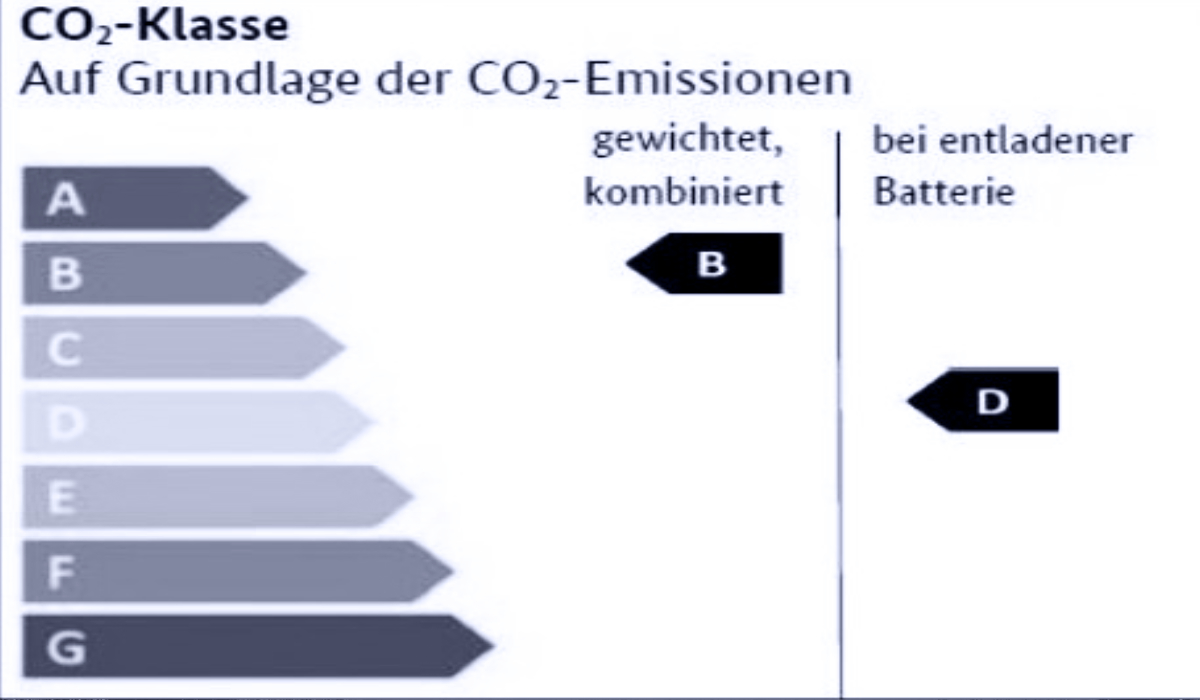It is intended to provide consumers with better and more relevant information. After being published in the Bundesgesetzblatt (Federal Law Gazette) on 22.02.2024 (BGBl. 2024 I No. 50), the PKW-EnVKV came into force on 23.02.2024. Since coming into force, all newly created labels and posters in car dealerships as well as all newly designed advertising must comply with the new regulations, without any lead time or transition period. This poses considerable challenges for manufacturers and dealers in particular, while tight transition periods apply to existing documents and adverting.
A. Background
The reason for the amendment is a change in European requirements that necessitate an adjustment to national law. A key reason for the amendment is the European-wide changeover of the test procedure for measuring fuel consumption and emissions from the previous NEDC (New European Driving Cycle) to the WLTP (Worldwide harmonized Light Vehicles Test Procedure). The Second Ordinance amending the Pkw-EnVKV now implements the European requirements into the German legal system. The BMWK (Federal Ministry of Economics and Climate Protection) has decided to significantly improve transparency and consumer information in the vehicle label: In future, the allocation of new passenger vehicles to CO2 classes will be based on the absolute CO2 emissions of the passenger vehicle, in order to make it easier for consumers to classify the impact of the passenger vehicles they are considering on CO2 emissions and the climate.
B. Amendments
The implemented amendments can be found throughout the entire text of the Ordinance and are summarized below.
I. Definitions
In Sec. 2 Pkw-EnVKV, a number of new definitions have been added and existing definitions have been clarified compared to the previous version.
In particiular, the definition of the term “new” vehicle has been supplemented in a way that two objective criteria from the case law of the BGH (BGH, decision of 21.12.2011 – I ZR 190/10) have been added to determine novelty. According to this, a vehicle that has been type-approved and has not yet been sold for a purpose other than resale or delivery is “new” if it was first registered for use on public roads no more than eight months ago at the time it was issued by the manufacturer or offered or advertised for sale, long-term rental or leasing, or if the vehicle has a mileage of 1,000 kilometers or less.
The definitions of “model” and “place of sale”, among others, have also been specified in relevant parts. The terms “long-term rental” and “energy consumption”, among others, have been newly introduced.
II. Vehicle label
The new passenger vehicle label now includes not only the consumption and emission data, but also information on the amount of vehicle tax, energy costs for an annual mileage of 15,000 kilometers and possible CO2 costs over the next ten years at an annual mileage of 15,000 kilometers . Furthermore, information on a CO2 class must be provided instead of the previous efficiency classes.
1. WLTP test procedure
After the requirement to determine fuel consumption and CO2 emissions for new vehicles on the basis of Regulation (EU) 2017/1151 of 01.06.2017 according to the stricter and more realistic WLTP test procedure (Worldwide harmonized Light-duty vehicles Test Procedure) was introduced at the end of 2018 on EU level, it has now been introduced in the amendment. It finally replaces the previous NEDC test procedure (New European Driving Cycle).
2. CO2 classes
In future, new passenger vehicles will be classified according to their absolute CO2 emission data (Sec. 3a Pkw-VKV). The previous CO2 efficiency classes will be replaced by so-called CO2 classes. Classification to a CO2 class is no longer based on the relative CO2 emissions of the vehicle in relation to its mass, but on the absolute value of the CO2 emissions of the vehicle in grams of CO2 per kilometer. In this context, the weight of a vehicle is no longer directly relevant. The new classification is intended to prevent a large vehicle being classified as similar to or even better than a small one on the basis of the same CO2 emission data. According to the new label, every vehicle is assigned to one of seven classes from “A” (green, zero emissions) to “G” (red, high emissions).
3. CO2 costs
In addition, the possible CO2 costs over the next ten years for an annual mileage of 15,000 km must be stated on the new vehicle label in accordance with the requirements of Annex 1 Part I No. 8 Pkw-EnVKV. The aim of displaying the energy costs is to make it clear to consumers what financial impact can be expected as a result of future CO2 pricing. It is predicted that CO2 prices will rise significantly in the future. However, as the actual level of the future CO2 price cannot yet be predicted with certainty, three different assumed average CO2 prices “low”, “medium” and “high” over a period of ten years are used to make three alternative calculations.
4. Double labelling for PHEV
Another new aspect is the double labelling for plug-in hybrids (so-called PHEV). As PHEVs have a combustion engine and an electric motor, two CO2 classes must be indicated in future in accordance with Annex 1 Part I No. 6 Pkw-EnVKV, which are represented by two arrows in the color scale. The first arrow continues to display the classification according to the weighted combined value, the official average value of CO2 emissions in mixed operation of electric motor and combustion engine. The second arrow represents the CO2 class in pure combustion engine mode with a discharged battery. This gives consumers an insight into how their usage behavior can affect the vehicle’s consumption data. At the same time, comparability with other vehicles is facilitated.
5. New labels for drive type and energy source
Furthermore, a separate car label template will be added for each drive type (petrol, diesel and natural gas cars, purely battery-electric, plug-in hybrids and fuel cell cars). This will provide customers with more comprehensive individual information and enable a better comparison between vehicles with the same drive type.
6. Used vehicles
According to Sec. 3 para. 4 sentence 1 No. 1 Pkw-EnVKV, used vehicles remain expressly exempt from the mandatory information, but voluntary information can be provided in accordance with sentence 2. If use is made of this option, Annex 1 Part I No. 3 Pkw-EnVKV stipulates that the heading must also be clearly marked with the word “used vehicle”.
III. Mandatory information on different usage scenarios
In addition to the combined consumption data, information on four different driving modes (“city center”, “suburban”, “country road”, “highway”) is defined in order to provide consumers with additional information according to their individual use. For purely electrically powered vehicles (BEV) and plug-in hybrid vehicles (PHEV), the power consumption and electric range must also be stated. This applies equally to the notice directly on the vehicle, the display for all vehicles at the point of sale and the guidelines in accordance with Sec. 4 Pkw-EnVKV.
IV. Promotion of vehicles
The amended Ordinance aims to achieve coherence between printed promotional literature and electronic promotion. This takes place against the background of the growing importance of online sales platforms and virtual showrooms as well as the increasing influence of social media on consumers’ purchasing decisions. It is therefore assumed that consumers in all channels have an increased interest in receiving comprehensive information about the characteristics of vehicles.
According to the Pkw-EnVKV, in future, information on energy consumption, CO2 emissions and the CO2 class or CO2 classes must be provided in promotional literature as well as in advertising on the Internet (including social media and video portals) and in electronically distributed promotional literature and promotional literature on electronic, magnetic or optical storage media.
V. Transitional regulations
The short transitional periods for the continued use of promotional literature, notices, displays and guidelines set out in the regulation, are striking. According to Sec. 9 para. 1 Pkw-EnVKV, advertising on the Internet may only continue to be used in accordance with the previous requirements of the Pkw-EnVKV until 01.05.2024. For promotional literature (print advertising) and electronic, magnetic or optical storage media, a transitional period runs until 01.08.2024. For the conversion of notices and displays at the dealer’s point of sale, Sec. 10 Pkw-EnVKV also stipulates 01.05.2024 and 14.07.2024 for guidelines.
Conclusion and outlook
Due to the continuous technological developments and the increasing use of vehicles with electronic drive systems, the Ordinance should be regularly reviewed for possible adjustments. The European Commission plans to review Directive 1999/94/EC on the display of consumer information on fuel economy and CO2 emissions in respect of the marketing of new passenger vehicles by 31.12.2024 in order to determine whether adjustments are necessary. For this reason, the BMWK will also review the Pkw-EnVKV again, will then publish a report with proposals for further development and amendment and will probably propose a further revision of this Ordinance as early as 2025. With its transitional periods of three or six months for existing labels and advertisements, the Pkw-EnVKV provides a relatively short period of time for the changeover in practice, which represents a major challenge for all parties involved. In view of the known risks, particularly under competition law relating to incorrect information, the parties involved are nevertheless required to implement the new requirements in time and completely.
Do you have any questions about this news, or would you like to discuss it with the author? Please contact: Michael Öttinger






